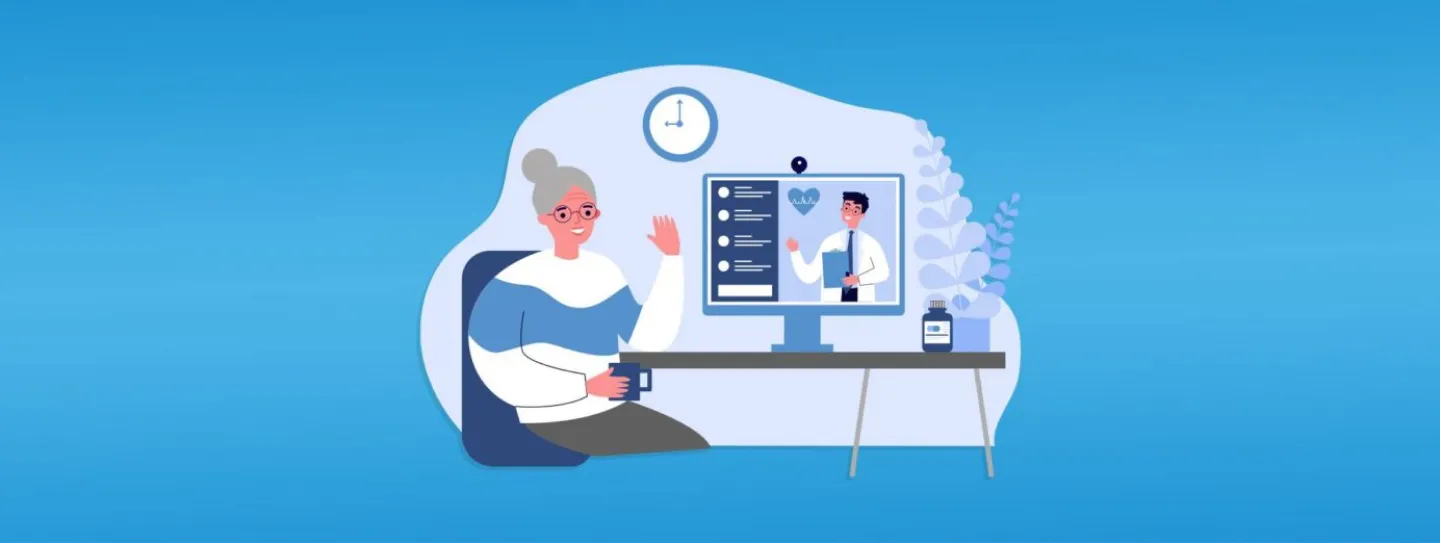The new technologies are expanding the digital health field, thus causing an increase in applications for remote monitoring. Patient Monitoring from a Distance (RPM) has existed within the healthcare setting for several years. It permits doctors and non-physician practitioners to observe patients with chronic conditions even if they are far away.
What is Remote Therapeutic Monitoring (RTM)?
Monitoring non-physiological data from a distance through technology includes musculoskeletal and respiratory system data, pain levels, patient adherence, and response to therapeutic intervention or medications. Information for remote therapeutic monitoring can be gathered, stored, or sent automatically. Patients may also provide their reports about the data to their providers.
RTM is needed to use a medical device that satisfies all requirements given by FDA. A “Qualified Healthcare Provider” (QHP) refers to professionals like physical therapists, occupational therapists, respiratory therapists, doctors, and physician assistants. There are five RTM codes. Four can be used for patients with musculoskeletal conditions. The term used for RTM codes is general management codes. This denotes that clinicians, particularly physical and occupational therapists, might charge these codes and provide services.
What is Remote Patient Monitoring (RPM)?
Remote patient monitoring, also known as remote physiologic monitoring or RPM, is a method of observing patients from distant locations. It has some distinctions compared to remote therapeutic monitoring. To be billed under RPM codes, the information gathered should include physiologic data like heart rate, blood pressure, etc. This information should be logged in automatically, not including data that patients manually input. RTM, like remote therapeutic monitoring, can also be self-reported or uploaded by the patient. Like RPM, RPM must use technology that fulfills the criteria of being a medical device. As known by many people as Evaluation and Management (E/M) codes, we cannot bill for these with physical therapists and occupational therapists because they are not allowed to do so.
RTM vs RPM: What’s The Difference?
The COVID-19 pandemic made everyone reconsider the kind and quality of healthcare services that can be given at home. Remote Patient Monitoring (RPM) has become very popular during this changing time. We need to discuss RTM vs RPM and their main differences, as well as how each could solve problems for your special patient group’s needs.
The Functional Differences
Remote Patient Monitoring (RPM) is a way to track patients from a distance, using technology to send data back to the clinician. This can happen in real-time or at specific time gaps, depending on the best choice for that patient and situation.
Clinicians can also monitor patients from a distance with remote therapeutic monitoring (RTM). However, RTM emphasizes patient “therapy adherence” and “therapy response” related to the status of the musculoskeletal and respiratory systems. Here, reviewing “non-physiologic data” is more suitable.
The comparison of RTM vs RPM is not only about monitoring but also includes clinical and therapeutic interventions. Each code set has its clinical applications, so healthcare providers must know which will suit their patient population better.
RTM vs RPM: Differences in CMS Codes
Codes for Remote Therapeutic Monitoring (RTM) belong to the category of digital care tools. They are used to measure non-physiological metrics that help in improving patient results. Any details that a medical device, including software fitting the definition of a medical device, can gather that is not physiological can be collected and charged under RTM. For instance, two classes of patient physiological data highlighted greatly are pain levels and medication adherence.
When we review RTM codes and compare them with RPM codes, it seems that the RTM codes might apply to a wider range of use cases. They focus on health conditions such as musculoskeletal system status, respiratory system status, therapy adherence, and therapy response. This implies that they permit the collection of non-physiologic data as well. The patients themselves can report RTM data, which can be entered manually into a device or uploaded digitally by patients into the system.
As mentioned before, RPM codes are evaluation/management codes billed by physicians or qualified healthcare providers. But RTM CPT codes are general medicine codes. The CMS examples show that RTM only concentrates on the musculoskeletal and respiratory systems.
Conclusion:
RTM adds another layer to remote monitoring, emphasizing therapeutic interventions and using non-physiological data. It complements the existing role of RPM in tracking physiologic metrics. As telemedicine keeps changing, it is very important for healthcare providers who want to improve patient care and reimbursement plans to comprehend RTM vs RPM.




